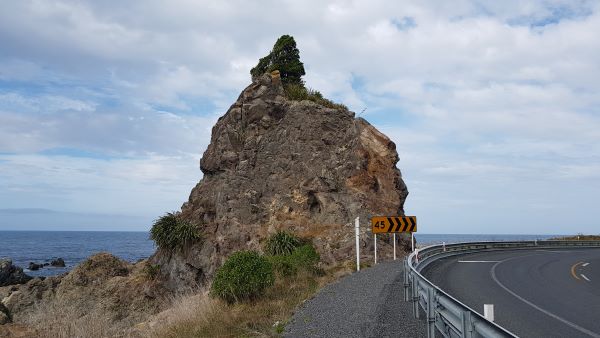
Iwi/hapū-led infrastructure development, and landscape evolution in the Anthropocene

Culturally significant coastal rock feature north of Kaikōura, with reconstructed highway infrastructure (photo credit: Matthew Hughes).
Infrastructure is often presented as key for progress and economic development. However in Aotearoa, modern infrastructure developed in the context of colonial settler processes with attendant land confiscations and alienation, the benefits of infrastructure have not been distributed fairly through space or time. The intersection of communities and infrastructure is acute in disasters, when infrastructure loss causes disruption and isolation. In re-establishing infrastructure systems after disasters, especially for systems deemed nationally important, tensions can arise between local communities and infrastructure agencies tasked with recovery.
Aotearoa landscapes are living palimpsests; continuously sculpted over time, partially erased and over-written through a convergence of tectonics, climate and ecosystem development. The Anthropocene age in which we live signifies human perturbations of Earth systems including landscape dynamics. Understanding past and current processes enables forecasting of future long-term landscape evolution. There has been little research to address how landscape evolution may influence long-lived infrastructure systems, nor how this may inform strategic development of future built environments. A whole-of-landscape approach would broaden understanding of how future landscape evolution will affect known archaeological and historical sites. Holistic understanding of long-term landscape evolution processes also aligns with Indigenous concepts of and relationships with landscapes, lending justification to deep-time approaches to landscape management.
There are two research themes: 1) Iwi/hapū-led infrastructure development and post-disaster infrastructure recovery – this applies mana whenua co-creation, archival and geospatial analysis, and state-of-the-art asset management approaches to chart past infrastructure system evolution and inform future developments for flourishing and resilient communities; and 2) Landscape evolution in the Anthropocene – this applies computer modelling to understand how landscapes change under different geomorphic, climatic and land-use scenarios, focussing on landscapes containing critical infrastructure systems, and landscapes with wāhi tapu/landscape features significant to mana whenua. This will inform optimal strategic infrastructure development, and long-term management of heritage sites and landscapes.
